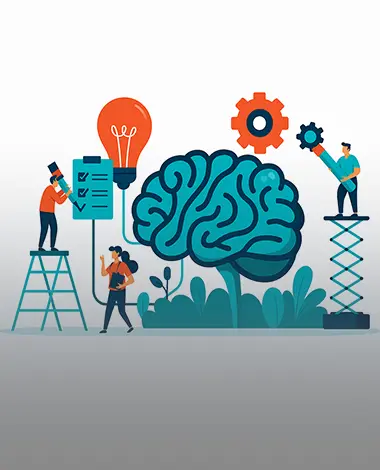The increasing demand for AI-driven customer support marks a major shift in business-customer interactions. It is driven by the need to scale operations, enhance efficiency, and improve customer satisfaction. Today’s Conversational AI systems deliver intelligent, proactive interactions that go well beyond the capabilities of basic chatbots. This third part in our series on Conversational AI explores its role in customer support: The benefits, applications, and challenges of customer service automation.
Changing Customer Expectations
Customers and their expectations have changed dramatically over the past decade. The widespread adoption of smartphones and digital services has conditioned today’s consumers to expect round-the-clock availability and real-time resolution. They demand immediate, personalised, frictionless interactions. Having to navigate complicated interactive voice response (IVR) menus on the phone, or endure days-long email response times, are just not acceptable.
Businesses worldwide are striving to meet those expectations by automating customer service using Conversational AI, which is fast becoming central to business-customer interactions.
Why Automate Customer Service with Conversational AI?
Traditional customer service systems rely on human agents for the most part. Their most significant drawbacks are slow response times and limited availability. Human support teams typically cannot meet the demand for instant, round-the-clock service. Further, different human agents may—in the same situation and on the same day—provide different levels of support quality.
Across industries, traditional support teams answer a small set of frequently asked questions many times each day, which—considering the feasibility of putting chatbots to the task—means resource inefficiencies. Many organisations find it difficult to scale support teams simply because hiring and training support staff can be expensive.
Whether it’s about response times, availability, consistency in service, cost inefficiencies or scaling, Conversational AI is often the answer.
AI chatbots can serve as first-line support, providing instantaneous responses to frequently asked questions—often reducing wait times from minutes to seconds. They can address simple queries (order status, return procedures), provide information (store locations, business hours) and offer assistance (resetting a password, card activation). Even this basic level of automation reduces the burden on human agents; it frees them to focus on complex queries and issues.
Availability is a key advantage. Automated customer service systems provide round-the-clock customer support regardless of time zones or staffing constraints. Fast response times and 24/7 availability are both critical to customer satisfaction.
Accuracy and consistency in AI-generated responses is improved by Machine Learning (ML) algorithms, which are trained on vast datasets that include data from past customer interactions.
The scalability of AI-driven chatbots and virtual assistants means businesses can manage fluctuating customer support demand without proportionally increasing staffing or other costs.
Chatbots Will Eclipse Traditional Call Centres
The global Conversational AI market—valued at $11.6 billion in 2024—is expected to grow at a CAGR of 23.7% from 2025 to 2030. Considering its potential in customer support, the question of chatbots taking over traditional systems is a when, not a why.
A 2024 poll by Tidio, of 750+ online business owners and 750+ customers, found that about 80% of customers would choose a chatbot for immediate service over waiting for a human agent. Almost all respondents believed that chatbots would make traditional call centres obsolete. The survey found that 19% of medium-sized businesses were already using chatbots in customer service—and almost 50% were planning to.
In 2022, Gartner projected that chatbots would become the primary customer service channel for 25% of organisations by 2027.
Automated Customer Service: Capabilities and Applications
Conversational AI systems offer functionalities that go well beyond answering simple queries, as illustrated by their more advanced use cases.
AI-powered ticketing systems automate ticket creation, categorisation, and routing to the correct department. They identify the nature and urgency of customers’ issues, after which they might provide AI-driven self-service solutions to reduce resolution times or—in the case of complex issues—pass them on to human agents.
AI-driven personalisation makes for a more human-like and satisfying support experience. By analysing customer interaction patterns, purchase history and individual preferences, AI-driven support can deliver tailored product recommendations, troubleshooting guidance, and loyalty program updates. H&M, a leading multinational fashion retailer, uses chatbots for customer service on its website, mobile app, and social media channels. Apart from performing basic tasks such as helping with returns, the chatbots act as personal shopping assistants—providing suggestions about clothing items and even offering styling advice.
Multilingual support extends AI-automated customer service to global audiences through real-time translation and multi-language interaction. Google Translate, which is widely used for general-purpose real-time translation, can be integrated into automated customer support systems. In addition to achieving higher customer satisfaction rates, companies that deploy multilingual AI support reduce their localisation costs.
Integrating IVR systems with Conversational AI makes for conversational IVR, which drastically reduces customer frustration rates. Consider that customers can speak naturally with the IVR system rather than listen to menu after menu and press button after button.
Next, AI-powered IVR systems generate “an idea about the caller” before the conversation begins—so they can deliver contextually relevant, more personalised responses. Most importantly, based on the customer’s issue as well as their tone and manner, these systems can—if required—route the call to a specific agent rather than to any available agent.
Conversational IVR systems remember previous interactions, so they can assist human agents by summarising conversation histories. Further, customers who need to call multiple times about one issue need not repeat themselves.
By taking up routine tasks, Conversational AI systems save time for organisations while also enhancing customer satisfaction. In healthcare, for instance, K Health’s mobile app includes a chatbot that works as a digital assistant. It asks patients basic but essential questions before passing on the chat to a doctor, who sees a summary of relevant patient information and a list of potential diagnoses.
AI’s proactive support capabilities predict customer issues before they arise. In banking, for instance, Capital One offers customers a Conversational AI app called Eno. The app answers routine queries and also provides information about potentially fraudulent charges and unwanted usage. Eno also proactively provides “useful insights when it spots free trials, recurring charges, and more.” Such assistance can preclude further fraudulent activity or problematic customer disputes.
Challenges and Considerations
In a 2024 survey of 1,000 senior executives across 59 countries and representing ten major industries—including 120 that were using AI primarily for customer support—only 26% of companies were “realising substantial gains from their use of AI.”
The current limitations of the technology represent only one source of the challenges around the automation of customer service.
A hybrid approach—one where AI systems and human agents work alongside each other—is often necessary because AI agents cannot handle all queries. AI systems may struggle to accurately interpret emotional nuances and handle sophisticated or complex queries. Some queries might require subjective judgment, such as when a bank customer asks for a certain fee to be waived. Some might require a sensitive approach, such as when a customer appears to be fraudulently demanding a refund. Emotionally charged situations are another example of the need for human agents in customer support.
Some AI-powered support systems can intelligently pass on complex or sensitive queries to a human agent. Some are capable of sentiment analysis and can escalate an issue to a human agent if they detect urgency or frustration. In these scenarios, the AI system transfers the full context of the issue—including conversation history, customer intent, and customer sentiment—to the human agent, which improves resolution speed and saves the customer the need to repeat themselves.
In a different approach, the AI system would handle all queries at initiation—and those it cannot fully comprehend or finds complex would be transferred to a human.
Essentially, companies need to strike a balance between automation and personal attention—whether it is about the percentage of queries handled by the AI system, the system’s capabilities in terms of human-like interactions, or the criteria for escalation to human agents.
Interactions can feel robotic and impersonal in the case of less sophisticated or poorly designed Conversational AI systems. This can reduce customer satisfaction levels or even outright cause customer frustration. To summarise from a 2023 Forbes article: “Following just one bad bot experience, consumers are more likely to buy from a different brand or let their family and friends know about their poor experience.”
This makes the choice of system an important consideration; organisations must weigh numerous factors towards choosing the right system. These include the general nature of their customers’ queries, the cost of the AI system, its core capabilities, and the level of sophistication it affords. Implementation involves challenges related to integration and setup, so organisations also need to assess whether the AI system integrates easily with their existing CRM, helpdesk, or ticketing platforms. Another requirement is a sufficiently large volume of historical data for the initial training of the system.
Challenges that surface during initial rollout include quality of training data, change management, and employee resistance. Further, setting up automation workflows and “fallback paths” for issue escalation to human agents requires thoughtful design and testing. Ongoing monitoring is essential to ensure that the system’s performance improves over time through learning and adaptation.
Maintaining brand consistency and aligning AI-generated interactions with customer expectations is critical for preserving brand identity. AI responses must reflect the brand’s voice, values, and professionalism. This can be achieved through continuous feedback and learning, which entails regular audits of interactions in conjunction with training on data that reflects brand voice.
Transparency about when customers are interacting with an AI agent, and giving them the option to talk to a human, can help address negative perceptions about AI. Consider that as recently as December 2023, a Gartner survey revealed that a majority of customers would prefer it if companies didn’t use AI for customer service; the top reason cited was the belief that chatbots would make it “more difficult to reach a person.”
Finally, regulatory and ethical considerations are becoming increasingly important. Organisations need to ensure that their automated customer service solutions comply with the appropriate data protection regulations. Ensuring proper consent for data collection and usage are crucial to responsible AI deployment.
Both Microsoft and Google, for instance, have extensive guidelines for responsible AI development and deployment. Companies planning on adopting Conversational AI systems to automate customer service must develop internal audit processes to mitigate bias and ensure fairness.
In Conclusion
Conversational AI is reshaping the customer support landscape. It is addressing the most significant limitations of traditional methods while meeting evolving customer expectations.
Significant challenges exist: Balancing automation with personal attention, choosing the right AI system, challenges around implementation and training data, and considerations of regulatory and ethical compliance.
For organisations that recognise the importance of these challenges and address them effectively, the strategic integration of AI with customer service promises vastly improved operational efficiency, significant cost savings, and improved customer satisfaction.
References and Further Reading
- 24/7 access to high-quality medicine (K Health)
- 9 Essential Help Desk Ticketing System Features (Tidio)
- AI Adoption in 2024: 74% of Companies Struggle to Achieve and Scale Value (Boston Consulting Group)
- AI Agents for Customer Service: Everything You Need to Know (Automation Anywhere)
- AI vs. Human Customer Service: Comparative Analysis (Dialzara)
- Conversational AI Market Size & Trends (Grand View Research)
- Customer Support: Using AI Chatbots For Efficiency And Empathy (Forbes)
- Endeksa Hits 138% Boost in Lead Generation with Tidio (Tidio)
- Eno is looking out for you (Capital One)
- Gartner Predicts Chatbots Will Become a Primary Customer Service Channel Within Five Years (Gartner)
- Gartner Survey Finds 64% of Customers Would Prefer That Companies Didn’t Use AI For Customer Service (Gartner)
- How Artificial Intelligence is Beneficial in IVR Systems (Sprinklr)
- How H&M Uses AI-Powered Chatbots to Improve Customer Service (Redress Compliance)
- How Much Does Customer Service Training Cost? (business.com)
- How to build a chatbot persona and increase engagements (indigo.ai)
- How you can use AI for customer service to help teams and customers (Intercom)
- Implementing AI in Customer Service: Top 7 Challenges and Solutions (Simply Contact)
- Microsoft Responsible AI: Tools and practices (Microsoft)
- Our AI Principles (Google)
- Overcoming Challenges in AI Deployment (RTS Labs)
- Pros and cons of AI in customer service (Enterprise Nation)
- The Future of Chatbots: 80+ Chatbot Statistics for 2025 (Tidio)
- The Good, The Bad And The Bot: How Chatbot Experiences Can Make Or Break Your Business (Forbes)
- This AI Chatbot Has Helped Doctors Treat 3 Million People–And May Be Coming To A Hospital Near You (Forbes)
- What should you look for in conversational AI for customer service? (Intercom)
- What’s the Best AI Customer Support Software? Top 9 Tools (Help Scout)
Table of Contents












